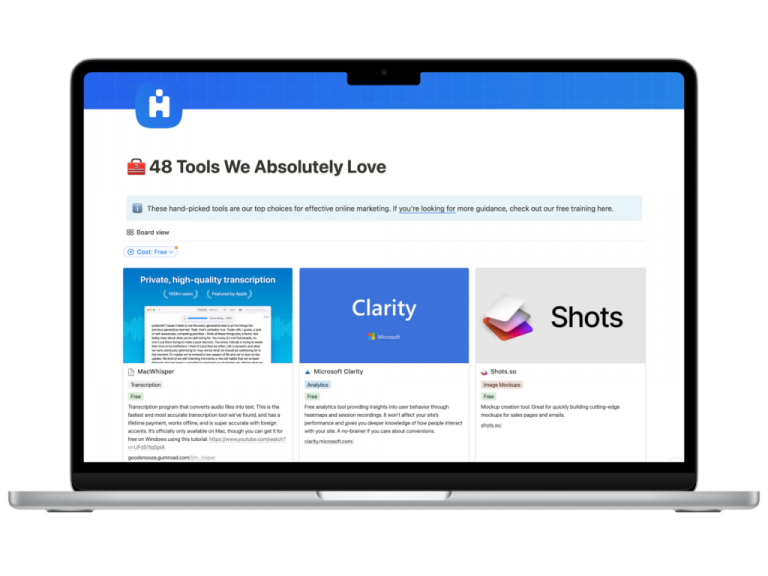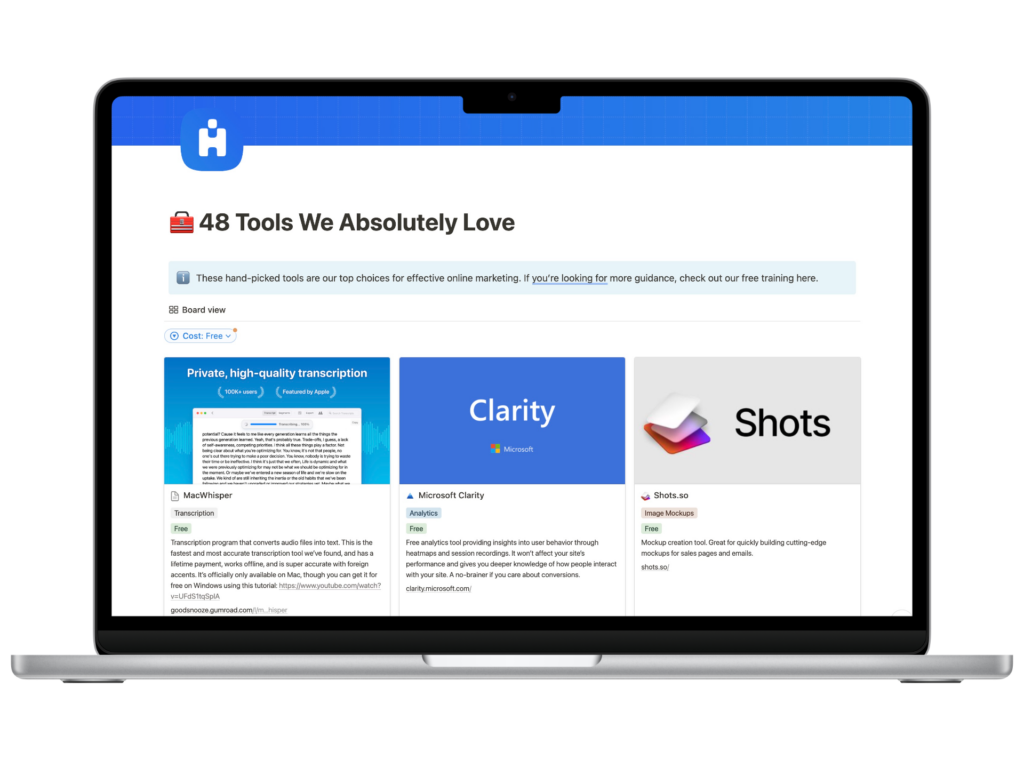Navigating a Cisco financial analyst interview requires a deep understanding of financial modeling, forecasting, and budgeting. This guide dives into common interview questions, crucial analysis techniques, and Cisco’s financial performance, providing you with the tools to excel in your interview.
From understanding the responsibilities and skillsets of a Cisco financial analyst to mastering relevant financial analysis techniques, this resource offers a structured approach to interview preparation. It also covers essential strategies for showcasing your skills and experience effectively.
Introduction to Cisco Financial Analyst Roles
Cisco’s financial analysts play a crucial role in the company’s financial health and strategic decision-making. Their responsibilities encompass a wide range of tasks, from analyzing financial performance to forecasting future trends and supporting executive-level decisions. These analysts are vital for maintaining Cisco’s financial stability and driving growth.
Role Description
Financial analysts at Cisco are responsible for interpreting and analyzing financial data to support business decisions. They conduct thorough financial modeling, performance reporting, and forecasting. This includes developing financial projections, evaluating investment opportunities, and ensuring compliance with financial regulations. Their work directly impacts Cisco’s strategic direction and overall profitability.
Required Skills
A strong foundation in financial principles, combined with analytical abilities, is essential for success in a Cisco financial analyst role. Proficiency in financial modeling software, such as Excel, is highly valued, as is a strong understanding of accounting principles and financial statements. Strong communication and presentation skills are also critical for effectively conveying insights to senior management. Experience with data analysis tools and techniques, and the ability to work independently and collaboratively are key.
Typical Tasks
Cisco financial analysts engage in a variety of tasks, contributing to various aspects of the company’s financial operations. These include analyzing financial performance, preparing budgets and forecasts, conducting variance analysis, and supporting the financial planning process.
| Role Description | Required Skills | Typical Tasks |
|---|---|---|
| Financial Analyst | Strong financial modeling skills, proficiency in Excel, knowledge of accounting principles, good communication skills, experience with data analysis tools | Analyzing financial performance, preparing budgets and forecasts, conducting variance analysis, supporting the financial planning process, creating financial models, interpreting financial statements, developing investment recommendations, and presenting findings to senior management. |
Common Interview Questions for Cisco Financial Analysts
Cisco Financial Analysts are crucial for the company’s financial health and strategic decision-making. Understanding the intricacies of financial modeling, forecasting, and budgeting is paramount for these roles. Interview questions aim to assess candidates’ analytical skills, problem-solving abilities, and communication skills, all while gauging their suitability for a fast-paced and demanding environment like Cisco.Successfully navigating these interview questions requires a comprehensive understanding of financial principles, industry trends, and Cisco’s specific operations.
Candidates should be prepared to demonstrate their proficiency in applying these principles to real-world scenarios and to articulate their thought processes clearly and concisely.
Financial Modeling Questions
A strong grasp of financial modeling is essential for Cisco financial analysts. Interviewers will probe candidates’ abilities to construct and manipulate financial models, using various techniques to project future performance and assess different scenarios.
- Financial models often involve complex formulas and assumptions. Candidates should demonstrate a deep understanding of the inputs and outputs within these models.
- Example: “Describe your experience with building financial models, including the various methods used to forecast revenue and expenses. Discuss how you would adjust the model if key assumptions were to change.”
- Another example: “Present a financial model that evaluates the potential return on investment (ROI) for a new product line at Cisco, including projected sales, costs, and profit margins.”
- Interviewers may also delve into specific financial modeling techniques, such as discounted cash flow (DCF) analysis or sensitivity analysis. Candidates should be prepared to explain the rationale behind these techniques and how they can be used to inform decision-making.
Forecasting and Budgeting Questions
Accurate forecasting and budgeting are vital for resource allocation and strategic planning at Cisco. Interviewers will assess candidates’ ability to predict future trends and allocate resources effectively.
- Candidates need to demonstrate an understanding of macroeconomic factors that might impact Cisco’s financial performance.
- Example: “How would you forecast Cisco’s revenue growth in the next fiscal year, considering the current economic climate and market trends?”
- Another example: “Explain how you would develop a comprehensive budget for a specific Cisco department, considering its strategic objectives and resource constraints.”
- Forecasting often involves analyzing historical data and identifying trends. Candidates should be prepared to explain how they would use data to make informed predictions.
Analytical and Problem-Solving Abilities
A deep understanding of financial analysis isn’t enough. Interviewers will also assess a candidate’s analytical abilities and problem-solving skills.
- Interviewers may present hypothetical scenarios requiring candidates to analyze financial data and recommend solutions.
- Example: “You discover an anomaly in the quarterly financial reports. Describe your approach to investigating this issue and proposing solutions.”
- Another example: “A key assumption in the financial model is challenged by recent market data. How would you re-evaluate the model and its assumptions?”
Communication Skills
Clear and concise communication of findings is critical in financial analysis. Interviewers will assess candidates’ ability to explain complex financial concepts in a way that is understandable to non-financial stakeholders.
- Candidates should be able to communicate their analysis clearly and persuasively, both verbally and in writing.
- Example: “Present your findings from a recent financial analysis to a group of senior executives, focusing on the key takeaways and potential implications for Cisco’s strategy.”
Experience-Based Questions
Cisco interviewers will probe candidates’ prior experiences to evaluate their practical application of financial analysis principles.
- Interviewers will ask about past projects, highlighting the candidate’s initiative and ability to work in a team setting.
- Example: “Describe a situation where you had to analyze a significant amount of financial data to make a crucial business decision.”
Question Categories and Examples
| Category | Example Questions |
|---|---|
| Financial Modeling | “Describe your experience with financial modeling techniques like DCF analysis.” |
| Forecasting | “How would you forecast sales for a new product launch, considering market trends?” |
| Budgeting | “Explain your approach to creating a budget for a specific department, considering its objectives and resource constraints.” |
| Analytical Abilities | “Describe a time you identified and resolved a financial discrepancy.” |
| Problem-Solving | “How would you approach analyzing a significant drop in sales for a particular product line?” |
| Communication | “How would you present your financial analysis to senior management?” |
| Experience | “Describe a challenging financial analysis project you worked on and the key lessons learned.” |
Financial Analysis Techniques for Cisco
Cisco, a global technology leader, relies heavily on robust financial analysis to understand its performance, identify growth opportunities, and make informed strategic decisions. A deep understanding of various financial analysis techniques is crucial for financial analysts at Cisco. These techniques allow for a thorough evaluation of financial statements, providing insights into profitability, efficiency, and overall health.Financial analysts at Cisco utilize a range of techniques to dissect the company’s financial data and derive meaningful conclusions.
These techniques help to interpret trends, identify areas of strength and weakness, and ultimately contribute to sound financial decision-making. By understanding how these techniques are applied, analysts can effectively assess the financial health and future prospects of Cisco.
Key Financial Ratios for Assessing Performance
Financial ratios provide a standardized way to assess Cisco’s financial health and performance over time. They compare different aspects of the company’s financial statements, such as balance sheets and income statements. By calculating and analyzing these ratios, analysts can identify trends and potential issues, allowing for informed recommendations.
- Profitability Ratios: These ratios evaluate Cisco’s ability to generate profits from its operations. Examples include gross profit margin, operating profit margin, and net profit margin. A higher margin generally suggests greater efficiency and profitability. For example, if Cisco’s gross profit margin increases year-over-year, it indicates the company is likely controlling its cost of goods sold effectively.
- Liquidity Ratios: These ratios assess Cisco’s ability to meet its short-term obligations. Examples include current ratio and quick ratio. A healthy liquidity position indicates that the company can cover its short-term debts with its readily available assets. A significant decrease in these ratios might suggest potential liquidity issues.
- Solvency Ratios: These ratios evaluate Cisco’s long-term financial stability and ability to meet its long-term obligations. Examples include debt-to-equity ratio and interest coverage ratio. These ratios help assess the company’s leverage and its capacity to manage its debt obligations.
Trend Analysis and Forecasting
Trend analysis involves examining historical financial data to identify patterns and predict future performance. By plotting key financial metrics over time, analysts can visualize trends, identify seasonality, and forecast future results. This process can be used to assess the effectiveness of Cisco’s strategies and anticipate potential challenges. For instance, a consistent increase in revenue over several years might suggest successful sales strategies, while a sudden decline could signal market pressures.
- Regression Analysis: This statistical technique is used to identify the relationship between two or more variables. In a Cisco context, it might be used to determine how changes in advertising expenditure affect sales or how changes in market share correlate with revenue growth. A positive correlation between advertising and sales suggests effective marketing strategies.
- Forecasting Methods: Analysts use various forecasting methods, such as moving averages, exponential smoothing, and time series analysis, to predict future financial performance. For example, a financial analyst at Cisco might use historical sales data to predict future revenue based on observed trends.
Comparative Analysis and Benchmarking
Comparative analysis allows financial analysts to evaluate Cisco’s performance relative to its competitors or industry benchmarks. This technique provides a broader context for understanding Cisco’s financial position and performance. By comparing key financial ratios or metrics with those of industry peers, analysts can assess how Cisco stacks up and identify areas for improvement. For example, comparing Cisco’s return on equity (ROE) to the average ROE of other technology companies reveals how effectively Cisco utilizes its shareholder investments.
- Industry Benchmarks: Cisco financial analysts utilize industry benchmarks to understand the company’s performance relative to its competitors and the broader technology sector. These benchmarks can be industry-specific ratios or metrics, providing valuable insights into relative performance. For example, comparing Cisco’s revenue growth rate to the average revenue growth rate of other major networking companies can reveal Cisco’s relative competitiveness.
Cisco’s Financial Performance and Industry Trends
Cisco’s financial performance is a critical aspect of evaluating its position within the networking industry. Understanding recent financial metrics, combined with insights into industry trends, provides a comprehensive view of Cisco’s prospects and challenges. This analysis will examine Cisco’s recent performance, highlighting key metrics and relevant industry trends.Recent financial reports indicate that Cisco has experienced a period of growth and stability, although fluctuations in certain segments remain.
This performance is evaluated against the backdrop of evolving industry dynamics. Analyzing industry trends and their impact on Cisco’s strategic initiatives provides valuable context.
Cisco’s Recent Financial Performance
Cisco’s financial performance has been largely influenced by the company’s ability to adapt to changing market conditions. Revenue growth has been steady, with notable increases in certain product segments, driven by strong demand for networking solutions in specific sectors. Profitability margins have remained generally consistent, demonstrating the company’s efficiency in managing costs and maximizing returns.
- Revenue Growth: Cisco has shown steady revenue growth, particularly in cloud-based networking and security solutions. This growth is a positive sign of the company’s ability to capture market share in high-growth areas.
- Profitability: Cisco’s profitability has remained relatively stable, demonstrating the company’s operational efficiency. The company’s ability to maintain profitability despite industry fluctuations is a key strength.
- Key Metrics: Analyzing key metrics like operating income, net income, and earnings per share (EPS) provides a detailed picture of the company’s financial health and growth.
Industry Trends Impacting Cisco
Several industry trends significantly influence Cisco’s financial performance. The shift towards cloud computing and the increasing demand for secure networking solutions are crucial factors.
- Cloud Computing: The global shift to cloud computing has dramatically increased the demand for networking infrastructure. Cisco, with its extensive portfolio of networking solutions, is well-positioned to capitalize on this trend.
- Cybersecurity: The rising threat of cyberattacks has created a significant market for cybersecurity solutions. Cisco’s cybersecurity offerings are a key component of their strategy in this sector.
- 5G and IoT: The expansion of 5G networks and the rise of the Internet of Things (IoT) are creating new opportunities and challenges for networking providers. Cisco is actively developing solutions to meet these evolving needs.
Cisco’s Position within the Industry
Cisco’s market share and product portfolio position it as a leader in the networking industry. The company’s vast network of partnerships and strategic alliances further enhances its competitive advantage.
- Market Share: Cisco maintains a substantial market share in the networking industry, driven by its comprehensive portfolio and strong brand recognition.
- Product Portfolio: Cisco’s broad product portfolio, including networking hardware, software, and security solutions, caters to a diverse range of customer needs.
- Partnerships: Cisco’s strong partnerships with various organizations help them expand their reach and access new markets.
Summary Table: Cisco Financial Performance and Industry Trends (2021-2023)
| Year | Cisco Revenue (USD Billions) | Industry Trend Impact |
|---|---|---|
| 2021 | 50.1 | Growing demand for cloud networking solutions |
| 2022 | 52.3 | Continued growth in cloud and cybersecurity segments |
| 2023 | 54.8 | Expansion of 5G and IoT networks impacting demand |
Case Studies in Financial Analysis for Cisco
Cisco, a global leader in networking technologies, regularly faces complex financial analysis challenges. Understanding these challenges and the methodologies used to address them provides valuable insight for aspiring financial analysts. This section presents a few case studies, illustrating common scenarios and the steps involved in their analysis.
A Case Study: Predicting Revenue Growth in a Changing Market
Cisco’s revenue growth is intricately tied to market trends, particularly in the adoption of cloud computing and 5G technologies. A key financial analysis challenge involves predicting future revenue streams considering the impact of these emerging technologies on existing product lines and potential new markets.
- Problem Definition: Cisco needed to forecast revenue for the next fiscal year, taking into account the potential impact of the transition to cloud-based networking solutions and the increasing demand for 5G infrastructure.
- Data Collection and Analysis: The analysis involved gathering data on market penetration rates for cloud-based solutions, 5G deployment timelines, and projected demand for Cisco’s relevant products. Key performance indicators (KPIs) such as customer churn rates, sales cycle lengths, and product adoption rates were crucial in this process.
- Financial Modeling: A financial model was developed to simulate various scenarios, considering different levels of cloud adoption and 5G penetration. Sensitivity analysis was performed to assess the impact of uncertainties on the revenue projections. A discounted cash flow (DCF) model was utilized to estimate the present value of future cash flows, factoring in the risk associated with the projected growth.
- Outcome and Implications: The analysis predicted a moderate revenue increase, with a significant portion of growth attributable to the emerging cloud and 5G markets. The model identified potential risks, such as the rapid evolution of competitors’ solutions, which could impact Cisco’s market share. This allowed Cisco to develop mitigation strategies, such as strategic partnerships and product innovation.
Applying Financial Modeling Techniques in a Cisco Context
Financial modeling is a powerful tool for assessing potential investment opportunities and understanding the financial implications of various strategic decisions. Applying these techniques in a Cisco context requires a deep understanding of the company’s operations, industry trends, and financial performance.
| Scenario | Financial Modeling Technique | Example Application |
|---|---|---|
| Evaluating a Potential Acquisition | Merger Model | Cisco could use a merger model to assess the financial viability of acquiring a smaller networking company. The model would analyze the combined financials of both companies, projecting future revenue, expenses, and profitability. |
| Assessing the Impact of a New Product Launch | Sensitivity Analysis | Cisco could employ sensitivity analysis to understand how changes in pricing, marketing spend, or product adoption rates affect the projected profitability of a new product line. |
| Projecting the Financial Impact of an Investment in Research and Development (R&D) | DCF Model | A DCF model could be utilized to estimate the return on investment (ROI) of a significant R&D investment in developing next-generation networking technologies. The model would discount the expected future cash flows from the new technologies, considering factors such as technological obsolescence. |
Financial Analyst Interview Preparation Strategies
Successfully navigating a Cisco financial analyst interview requires a multifaceted approach encompassing strong technical skills, a deep understanding of Cisco’s financial landscape, and the ability to articulate your analytical prowess. Thorough preparation is key to presenting yourself as a confident and capable candidate.A comprehensive approach to interview preparation involves understanding the specific requirements of the role, actively practicing your responses to common questions, and developing your analytical and problem-solving skills.
This structured approach will allow you to demonstrate your aptitude and effectively showcase your value proposition to Cisco.
Demonstrating Relevant Skills and Experience
Highlighting relevant skills and experience is crucial for showcasing your suitability for the role. Tailor your responses to align with Cisco’s specific needs and demonstrate your proficiency in financial analysis. Emphasize quantifiable achievements and results to showcase the impact you’ve had in previous roles. Use specific examples from your experience to illustrate your abilities.
- Quantify your accomplishments: Instead of saying “Improved efficiency,” state “Improved efficiency by 15% by streamlining the process.” Quantifiable results make your contributions more impactful.
- Showcase analytical skills: Detail your experience with financial modeling, forecasting, and valuation techniques. Use examples where you’ve applied these skills to real-world scenarios.
- Emphasize problem-solving abilities: Describe situations where you’ve identified and resolved financial issues. Highlight the analytical steps you took and the outcomes achieved.
Developing Analytical and Problem-Solving Abilities
Strong analytical and problem-solving abilities are paramount for a financial analyst role. Demonstrate your capacity to interpret financial data, identify trends, and develop actionable recommendations. Practice working through case studies to refine these skills.
- Practice financial modeling: Familiarize yourself with various financial models, such as discounted cash flow (DCF) models, and practice applying them to hypothetical situations. This will enhance your understanding of financial analysis techniques.
- Work through case studies: Solve case studies related to financial analysis, particularly those relevant to Cisco’s industry and business models. This allows you to apply your knowledge and develop your problem-solving abilities.
- Prepare for hypothetical situations: Anticipate common scenarios faced by financial analysts, such as unexpected market shifts or budget constraints. Develop strategies for addressing these scenarios and showcase your ability to remain composed and resourceful.
Interview Checklist
A structured approach to interview preparation is vital. A comprehensive checklist ensures you cover all the necessary steps before, during, and after the interview.
| Phase | Actions |
|---|---|
| Before the Interview | Research Cisco’s financial performance, industry trends, and recent news. Prepare answers to common interview questions. Practice your responses to hypothetical situations. Ensure your attire is professional and appropriate. |
| During the Interview | Listen attentively to questions and provide clear, concise answers. Maintain eye contact and use professional body language. Ask thoughtful questions to demonstrate your engagement and interest. Show confidence and enthusiasm. |
| After the Interview | Send a thank-you note to the interviewer(s) expressing your appreciation for their time and consideration. Reflect on your performance and identify areas for improvement. Follow up with any additional information or questions. |
Understanding the Financial Analyst Role
A financial analyst plays a critical role in organizations, using financial data to inform strategic decisions and drive profitability. Their responsibilities span a wide range of activities, from evaluating investment opportunities to managing budgets and forecasting future performance. This multifaceted role requires a blend of analytical skills, financial acumen, and communication abilities.
General Financial Analyst Role Description
Financial analysts, in their general capacity, are responsible for analyzing financial data, preparing reports, and offering recommendations to improve financial performance. They assess current financial health, forecast future trends, and identify potential risks and opportunities. This includes tasks like preparing financial statements, conducting market research, and interpreting financial data. A general financial analyst’s work is fundamental to decision-making at all levels of an organization.
Types of Financial Analyst Roles
Financial analysis encompasses diverse roles, each with unique responsibilities and required skills. Key distinctions include investment banking and corporate finance.
- Investment Banking Analysts typically focus on advising corporations on financial transactions such as mergers and acquisitions, debt financing, and equity offerings. They often work with clients to analyze potential investments, evaluate market conditions, and structure financial deals. Investment banking analysts require strong analytical and communication skills, along with an understanding of financial markets and industry trends.
- Corporate Finance Analysts, on the other hand, focus on internal financial strategies within a company. Their duties often include budget management, financial modeling, forecasting, and risk assessment. They are integral to operational efficiency and financial planning within a company’s existing framework. Strong financial modeling and forecasting skills are paramount for this role.
Key Responsibilities and Required Skills
The responsibilities and skills required for each type of financial analyst role differ, though some core skills remain consistent.
| Role Type | Key Responsibilities | Required Skills |
|---|---|---|
| Investment Banking | Evaluating investment opportunities, advising on financial transactions, conducting market research, analyzing financial statements, creating financial models, presenting findings to clients. | Strong analytical skills, financial modeling skills, understanding of financial markets, excellent communication skills, proficiency in MS Office suite, knowledge of industry trends. |
| Corporate Finance | Budget management, financial modeling, forecasting, risk assessment, developing financial plans, interpreting financial statements, monitoring financial performance, presenting findings to management. | Strong analytical skills, financial modeling skills, forecasting skills, understanding of accounting principles, excellent communication skills, proficiency in MS Office suite, knowledge of relevant industry. |
Career Path and Progression
A typical financial analyst career path often starts with entry-level positions, followed by increasing responsibilities and skill development. Progression frequently involves gaining experience in specific areas, like valuation, mergers & acquisitions, or corporate finance. This often leads to senior analyst positions and potentially, management roles.
Note: This flowchart represents a general progression. Actual paths may vary based on individual career choices, industry experience, and company-specific opportunities.
Final Conclusion
In conclusion, acing a Cisco financial analyst interview demands a blend of technical proficiency and strategic communication. This comprehensive guide provides the necessary knowledge and tools to confidently navigate the interview process. Remember to thoroughly research Cisco’s financial performance, practice answering common questions, and showcase your analytical and problem-solving abilities. By doing so, you’ll significantly enhance your chances of success.
Question & Answer Hub
What are some common financial modeling techniques used in a Cisco interview?
Common techniques include discounted cash flow (DCF) analysis, sensitivity analysis, and scenario planning. These techniques are used to evaluate potential investment opportunities and assess the financial viability of projects.
What kind of experience is typically expected for a Cisco financial analyst role?
Candidates should possess a strong understanding of financial statements, financial analysis tools, and relevant software. Experience with financial modeling, forecasting, and budgeting is highly desirable.
What are some examples of questions focusing on analytical abilities in a Cisco interview?
Questions might involve interpreting financial data, identifying trends, or proposing solutions to hypothetical financial challenges faced by Cisco. They also assess your ability to think critically and solve problems creatively.
How can I prepare for the behavioral questions in a Cisco financial analyst interview?
Prepare stories that showcase your problem-solving skills, teamwork, communication, and adaptability. Highlight instances where you successfully analyzed a situation, identified a problem, and developed a solution.




